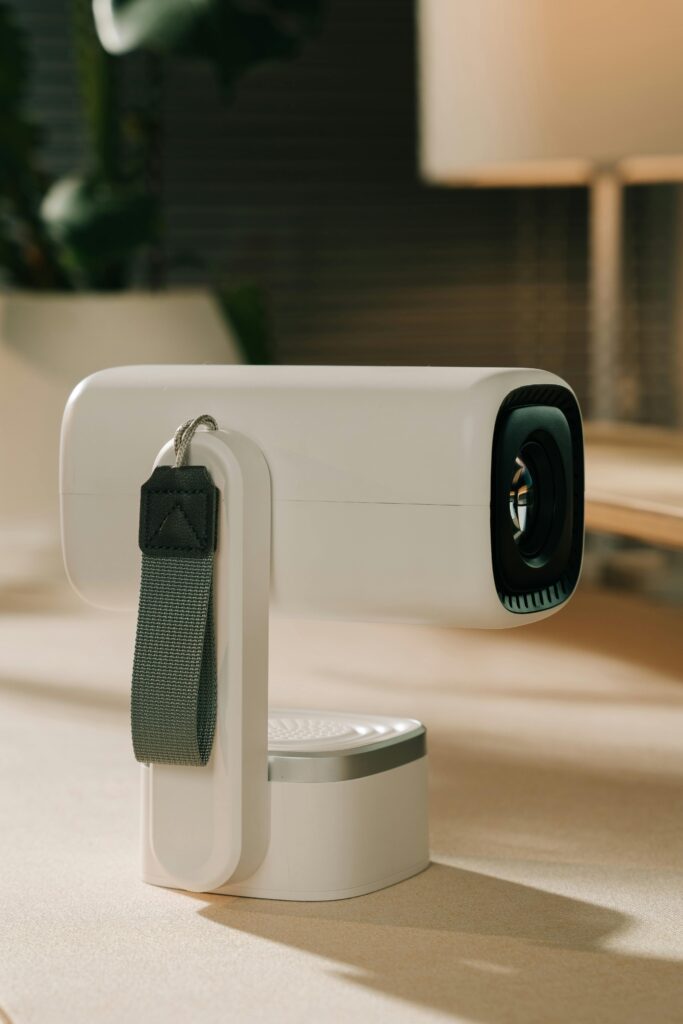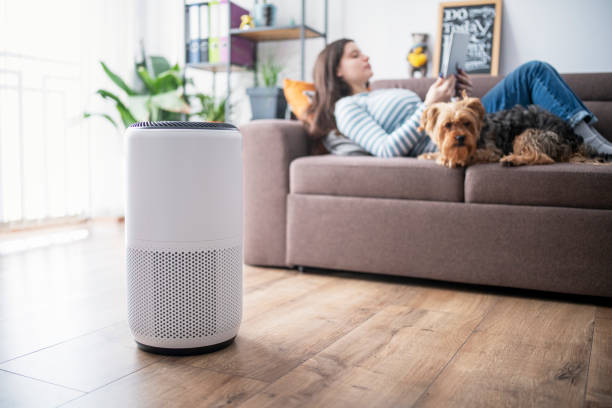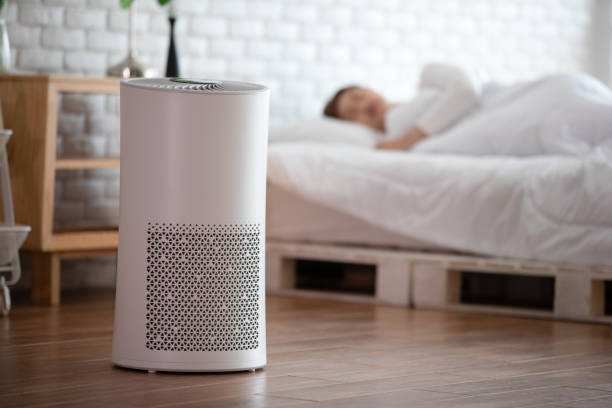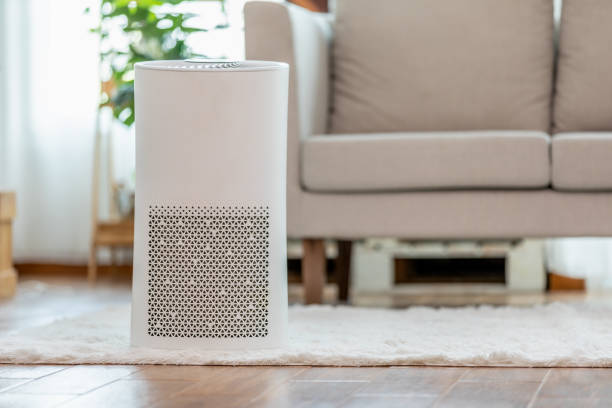
Indoor air quality is a critical concern for millions of allergy sufferers worldwide. With allergens like dust mites, pollen, pet dander, and mold spores lurking inside our homes, managing these invisible irritants is essential to maintaining comfort and health. In 2025, advances in smart ventilation technology are revolutionizing how we tackle indoor allergens by dynamically responding to air quality in real-time. This blog explores how air quality responsive smart ventilation can allergy-proof your home, backed by recent trends, case studies, and practical tips.
Why Indoor Air Quality Matters for Allergy Sufferers

Allergens inside the home can trigger sneezing, congestion, itchy eyes, and even asthma attacks. Common indoor allergens include:
- Dust mites thriving in bedding and upholstery
- Pollen entering through windows and doors
- Mold spores growing in damp areas
- Pet dander from cats, dogs, and other animals
- Volatile Organic Compounds (VOCs) from cleaning products and paints
Poor indoor air quality worsens allergy symptoms and impacts overall respiratory health. According to recent studies, controlling indoor pollutants can significantly reduce allergy flare-ups and improve quality of life. Ventilation plays a vital role by removing stale, allergen-laden air and bringing in fresh, filtered air.
What is Air Quality Responsive Smart Ventilation?

Unlike traditional ventilation systems that run on fixed schedules or manual settings, air quality responsive smart ventilation uses sensors to continuously monitor indoor air parameters such as particulate matter (PM2.5), VOCs, carbon dioxide (CO2), and humidity. These systems then automatically adjust airflow, filtration, and exhaust rates to maintain optimal air quality.
Key features include:
- Real-time air quality monitoring via IoT sensors
- Automated control of ventilation fans and HVAC integration
- AI-driven analytics predicting and responding to pollution spikes
- Remote control and alerts through smartphone apps
In 2025, such smart ventilation solutions are becoming mainstream in homes, schools, and workplaces, offering personalized and energy-efficient air quality management.
Benefits of Smart Ventilation for Allergy Sufferers

Smart ventilation systems provide several advantages for those sensitive to allergens:
- Dynamic allergen reduction: Sensors detect rising allergen levels and increase ventilation or activate filtration automatically.
- Energy efficiency: By adjusting ventilation only when needed, these systems reduce energy waste compared to constant ventilation.
- Improved comfort: Maintaining balanced humidity levels helps prevent mold and dust mite proliferation, common allergy triggers.
- Peace of mind: Continuous monitoring and alerts empower users to take timely action.
Real-World Example: Kodicals Family Case Study
The Allergy & Asthma Network reported a family that installed a smart ventilation system with integrated air quality sensors. Over six months, they observed a 47% reduction in indoor allergens and a corresponding decrease in allergy symptoms among family members. The system’s ability to automatically increase ventilation during high pollen days was particularly effective.
User Experiences from Reddit and Quora
Many allergy sufferers share their success stories with smart air purifiers and ventilation on platforms like Reddit and Quora. Common themes include improved sleep quality, fewer allergy attacks, and reduced reliance on medication after upgrading to smart ventilation systems combined with HEPA filtration.
Key Features to Look for in Smart Ventilation Systems
When selecting a smart ventilation system to allergy-proof your home, consider these features:
- HEPA and Activated Carbon Filters: Capture fine particles and neutralize odors and VOCs effectively.
- Advanced Sensors: Capable of detecting PM2.5, VOCs, CO2, temperature, and humidity for comprehensive air quality assessment.
- AI and IoT Integration: Enables predictive air quality management and remote monitoring via apps.
- Compatibility with Smart Home Ecosystems: Integration with Alexa, Google Home, or Apple HomeKit for voice control and automation.
- Energy Recovery Ventilation (ERV): Recovers heat from exhaust air to improve energy efficiency while maintaining fresh air supply.
How to Allergy-Proof Your Home with Smart Ventilation
Here are practical steps to maximize the benefits of smart ventilation for allergy relief:
- Install Smart Ventilation with Air Quality Sensors: Place sensors in bedrooms, living rooms, and kitchens to monitor allergen hotspots.
- Use Portable Air Quality Monitors: Identify specific pollution sources and adjust ventilation accordingly.
- Maintain HVAC Systems and Filters: Replace HEPA filters every 6-12 months and clean ducts regularly to prevent allergen buildup.
- Control Indoor Humidity: Use smart humidifiers or dehumidifiers to keep humidity between 40-50%, discouraging dust mites and mold.
- Optimize Ventilation Strategies: Use demand-controlled ventilation that increases airflow during high pollution or occupancy periods and reduces it when air quality is good.
- Seal Air Leaks and Improve Insulation: Prevent outdoor allergens from entering and improve ventilation efficiency
Emerging Air Quality Monitoring Trends for 2025
1. Real-Time Data and Advanced Air Quality Modeling
The integration of real-time sensor data with sophisticated air quality models allows for dynamic tracking and prediction of pollution levels over wide areas. This empowers governments and individuals to respond proactively to air quality changes both indoors and outdoors.
2. AI-Powered Tailored Air Quality Analysis
Artificial intelligence is increasingly used to analyze complex air quality data, identify pollution patterns, and provide customized recommendations for improving indoor environments. AI-driven platforms enable precise, scenario-specific solutions for homes and workplaces.
3. Enhanced Sensor Accuracy and Miniaturization
Advances in sensor technology are improving the detection of a broader range of pollutants—including VOCs, PM2.5/PM10, CO2, and radon—at lower concentrations. Miniaturized, portable sensors also make personal and wearable air quality monitoring more accessible.
4. Integration with Smart Home Ecosystems and IoT
Indoor air quality monitors are increasingly integrated with smart home systems like Alexa, Google Assistant, and Apple HomeKit. This connectivity allows automated responses such as adjusting HVAC systems or air purifiers based on real-time air quality data, enhancing convenience and efficiency.
5. AI and IoT-Enabled Hyperlocal Monitoring
Combining AI with IoT networks of compact, cost-effective sensors enables hyperlocal, highly precise air quality monitoring. This approach supports targeted interventions in specific rooms or neighborhoods, improving health outcomes and energy efficiency.
6. Subscription-Based Air Quality Monitoring Services
Subscription models offering hardware, software, and maintenance as a package are gaining popularity. This makes advanced air quality monitoring solutions more affordable and scalable for homeowners and small businesses.
7. Focus on Regulatory Compliance and Health Awareness
Stricter indoor air quality regulations worldwide, coupled with rising public awareness of IAQ’s impact on respiratory health and productivity, are driving demand for sophisticated monitoring solutions.
8. Wearable and Portable Air Quality Monitors for Personal Health
The rise of wearable air quality devices allows individuals, especially those with respiratory conditions, to monitor their immediate environment and avoid high-pollution areas, promoting healthier lifestyles
Frequently Asked Questions (FAQs)
Q1: What allergens can smart ventilation systems help reduce?
Smart ventilation systems primarily reduce airborne allergens such as dust mites, pollen, pet dander, mold spores, and VOCs by filtering and exchanging indoor air efficiently.
Q2: How do air quality sensors work in smart ventilation?
Sensors continuously measure pollutants like PM2.5, VOCs, CO2, and humidity. The system uses this data to adjust ventilation rates in real-time, ensuring optimal air quality.
Q3: Can smart ventilation systems eliminate all allergens?
While smart ventilation significantly reduces airborne allergens, it cannot eliminate all sources. Combining ventilation with regular cleaning and allergen avoidance strategies is essential.
Q4: What is the difference between smart ventilation and traditional ventilation?
Traditional ventilation runs on fixed schedules or manual controls, whereas smart ventilation dynamically adjusts airflow based on real-time air quality data for better efficiency and health benefits.
Q5: Are smart ventilation systems energy efficient?
Yes, by operating only when needed and recovering heat from exhaust air, smart ventilation systems reduce energy consumption compared to constant ventilation.
Q6: How often should I replace filters in smart ventilation systems?
HEPA and carbon filters typically need replacement every 6 to 12 months, depending on usage and air quality levels.
Conclusion
Air quality responsive smart ventilation is transforming how allergy sufferers manage their indoor environments. By continuously monitoring pollutants and adjusting ventilation automatically, these systems provide a powerful defense against allergens while optimizing energy use. As 2025 ushers in smarter, more connected homes, investing in advanced ventilation technology is a proactive step toward allergy-proofing your living space and breathing easier every day.
Explore smart ventilation options today and take control of your indoor air quality for a healthier, allergy-free home.